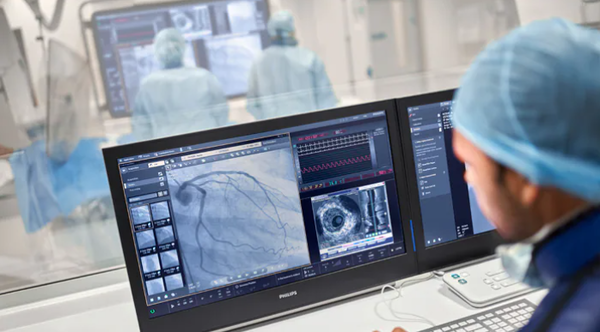Eight out of 10 radiologists in the Asia-Pacific region believe that artificial intelligence will help the clinical workflow for better diagnosis and data processing if properly incorporated into the system, Royal Philips said Tuesday.
Based on a recent survey, the company said about 71 percent of Korean respondents also expected AI’s introduction to their clinical workflow.

However, radiology experts said that the lack of a stable information technology environment and the cost of digital transformation are dragging the new technologies’ streamlining of workflows. They also complained of the shortage of skilled medical staff despite the increasing number of patients and demand for medical care.
Philips surveyed 108 radiologists in Korea, Australia, and Singapore for their opinions on introducing digital technologies. It published the report “Precision Diagnosis: Radiology’s Evolution toward a Digital Healthcare Future.”
The report said healthcare problems intensify due to population aging, increasing chronic diseases, and the rise of demand for healthcare services, noting that radiologists are at a crossroads to solve the matters with digital technology.
Asked about the future of precision diagnosis, the respondent stressed that the use of data and AI would improve patient treatment outcomes and predicted that informatics and cloud technology would enhance the workflow.
Radiologists in the three countries also said that the lack of a systematic and stable IT environment, the cost of digital transformation, insufficient medical experts and training, low data interoperability, and the time needed to adopt digital technology are the biggest obstacles to introducing digital technology.
Although higher-level diagnosis became available with the development of imaging technology, radiologists and related experts said they had to shoulder mixed workflows due to various imaging machines.
However, 90 percent of respondents, and 84 percent of Korean radiologists, answered that they are using a multi-modality platform that helps to integrate data from different imaging devices such as X-rays and magnetic resonance imaging (MRI) to ease the work.
The report elaborates that radiology professionals have faced work environment matters, technical problems, and a lack of skilled staff.
About 26 percent of Korean respondents cited the lack of skilled medical staff as the biggest challenge in their everyday work situations, higher than Singapore's 6 percent and Australia's 11 percent.
“Radiology has to drive transitions in the fast-changing healthcare sector, and healthcare leaders should engage in discussions with radiologists to figure out the challenges of radiology and introduce new technologies to make the most of them,” said Peter Quinlan, head of Precision Diagnosis and Image-Guided Therapy Business for Asia Pacific region at Philips.
Quinlan added that smarter and seamless precision diagnosis would help healthcare overcome the shortage of workforces and provide more effective customized treatment.

